By Eric Vandenbroeck
and co-workers
A Way Forward For Russia
During the initial
abandonment of the Warsaw Pact, Helmuth Kohl advised accomplishing as much
as possible while Yeltsin was still around. As the former chancellor put it,
“everything you can nail down now” should be nailed down because “you don’t
know how things are going to work out” with the
following Russian president.
Yeltsin’s successor,
Vladimir Putin, was diligently dismantling the feeble
democratic institutions that did exist. In their place, Putin patched
together a facade that displayed all the rituals and institutions of a democracy—but
was nothing more than an empty shell. After Putin extended his rule by another two six-year terms in 2020 and then poisoned and
imprisoned his fiercest domestic opponent, Alexey Navalny, Russia emerged as an
unabashed dictatorship. Seemingly at the peak of his power, Putin launched a
full-scale invasion of Ukraine and threatened the West with nuclear war if it intervened
militarily.
A popular explanation
for Putin’s attack in Russia and the West is that the United States and its
allies are to blame because they expanded NATO eastward, forcing him to make a
last stand in Ukraine. This narrative ignores that Ukrainians were deeply
ambivalent about joining NATO before Putin first invaded their country eight
years ago and that the alliance was divided over Ukraine’s membership. Germany
and France opposed all U.S. presidents after George W. Bush utterly
uninterested in the prospect. Moreover, by seizing Crimea and kindling a
low-level war in eastern Ukraine in 2014, Putin effectively derailed Ukrainian NATO membership by creating
an intractable territorial conflict the alliance would be loath to inherit.
Putin has since clarified that his real objective in Ukraine is to reconquer
territory once Russia controls it.
Calling NATO the
instigator of Putin’s war of aggression is a distraction, not a reason. Even
with East-West relations at their worst since the darkest days of the Cold War,
the United States and its allies do not pose a military threat to Russia thanks
to Moscow’s nuclear deterrent. That the Kremlin still plays up NATO as a
bogeyman says more about Russia’s phobias than the actual dangers the country
faces. It is not the alliance’s enlargement that led Putin to attack Ukraine;
it is Russia’s failure to become a democracy.
A democratic Russia
would not have taken issue with an alliance of democracies moving closer to its
borders. And a democratic Russia would not be waging war on another democracy,
Ukraine, or threatening other European democracies. Russia’s failure to become
a democracy is the root cause of its conflict with the West—and will be the
country’s biggest burden in the era after Putin. This hard truth raises a big
question: Can Russia, as long as it is run as an empire and afflicted with post-imperial phantom pains, ever become a democracy?
Protesters march in support of jailed opposition
leader Alexei Navalny
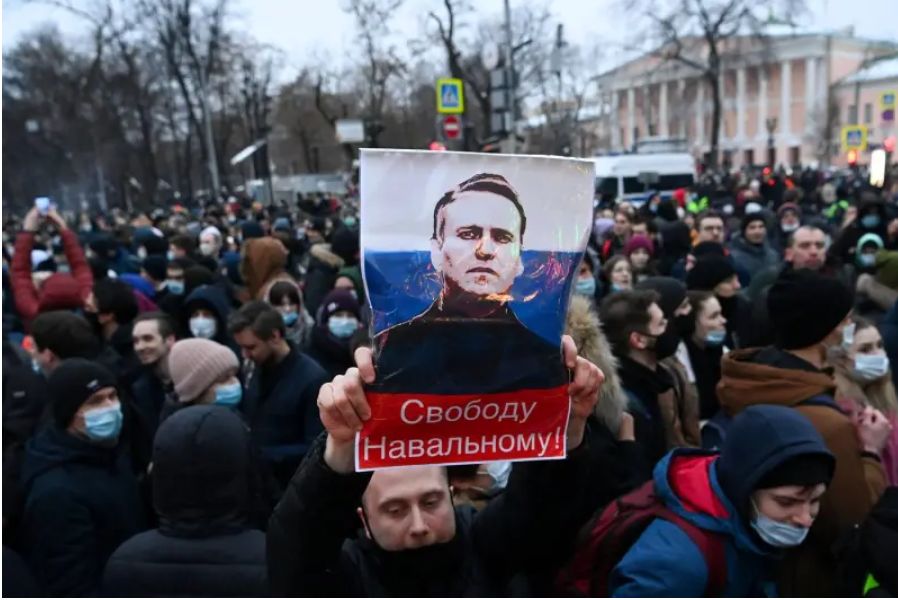
Because of Russia’s
long history of despotism, many in the West doubt that Russians are capable of
adopting democracy. And in Russia itself, the belief that Western-style
democracy is impossible is shared not only by Putin supporters but also
monarchists, communists, nationalists, and Eurasianists.
They all argue that Russia must follow its own culturally determined path and
that it inevitably finds itself in conflict with the West because of Russia’s
unwillingness to bend to the diktat of liberal democracies.
Defenders can hear
the argument that democracy is incompatible with certain cultures of autocracy
worldwide. Local political tradition plays a critical role in how fast
democracy takes root in a country, but it is not deterministic. South Korea is
a vivid example of how a country with no democratic traditions can transform
itself into a leading democracy within a couple of generations. In contrast,
North Korea illustrates how that same nation can be trapped in a dictatorship
because of an arbitrarily drawn border.
Russia was not
preordained to despotism nor to a clash with the West. In 1991, the first time
I visited Russia, the Soviet state was in its death agony, but the people I
encountered were ebullient. For an American to meet a Russian in those days was
like a reunion of long-lost relatives. We found a convergence of worldviews
that communism was bankrupt and that Western democracy, whatever its pitfalls,
was a superior political system. For many Russians, used to shortages and
shabbiness, the appeal of the West lay primarily in the gleam of its consumer products.
But plenty of Russians also recognized the intangible value of political rights
and freedoms, especially after seven decades of one-party tyranny. When the
Soviet Union collapsed, Russia started its new existence as a multiparty
democracy.
Now, 30 years later,
Putin has turned his country into a revanchist dictatorship. When he is gone,
dead, or deposed, there will be no joyous reunions between Russians and
Americans. The relationship will be marked by mutual suspicion, recrimination,
and clashing worldviews.
How Did Things Go So Wrong?
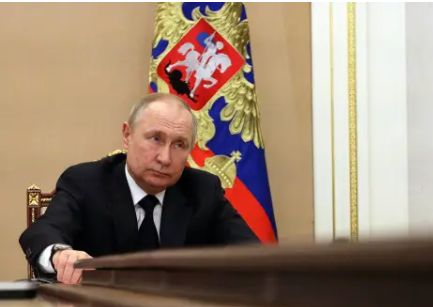
Although the Soviet
Union and the Western powers—the United States, Britain, and France—were
adversaries during the Cold War, they shared a common victory in World War II.
Soviet leader Joseph Stalin’s alliance with Western democracies was the main
source of the Soviet Union’s legitimacy as a world power, cemented in its
position as a founding member of the United Nations. At the same time, the
Soviet Union’s monumental human sacrifice during the war served as an alibi for
Stalin to seize half of Europe.
The Soviet regime
relished the prestige that rivalry with the West brought while jealously
striving to compete with it in every field of human endeavor. That’s why
Russia’s rapprochement with the West; there was a genuine eagerness among
Russians to live as in the West, both economically and politically. But
Gorbachev’s policies of perestroika (“restructuring”) and glasnost (“openness”)
could not reform the Soviet Union—and instead sped up its demise.
When the Soviet Union
fell apart in December 1991, 14 newly independent countries transformed
themselves into nation-states—to varying degrees of success. The 15th, the
Russian Federation, struggled to redefine itself. The fall of the Soviet Union
signified the collapse of an empire that Russia had been expanding for
centuries. Stalin’s territorial gains in World War II stretched from Prague to
Pyongyang—the absolute zenith of Russian influence. In 2005, when Putin called
the Soviet
collapse “the greatest catastrophe of the 20th century,” he was not
lamenting the Soviet Union per se but a Russian empire of unparalleled reach
and power.
Russia under Yeltsin became
the Soviet Union’s legal successor, with all the prestige (i.e. a nuclear
arsenal, a veto on the U.N. Security Council, and a global network of
embassies) as well as burdens (i.e., external debt obligations) that entailed.
With 11 time zones and more than 100 ethnic groups, Russia remained a de facto
empire in sheer size and mentality. There was no process of de-Sovietization or
lustration, as a significant portion of the population looked back at the
vanished empire with nostalgia and regret. Besides a few prominent name changes
to their pre-communist antecedents, most places in Russia were not renamed.
Statues of Soviet founder Vladimir Lenin continued to overshadow Lenin Squares
across the country, and Lenin’s mummy remained in its tomb in the Kremlin
walls. Individual Russians were free to shake off the shackles of the past in
their own lives, but a sense of loss rather than liberation defined the
national mood. That feeling was exacerbated by the chaotic transition from a
command economy, as millions of Russians lost their livelihoods and slid into
poverty.
In 1993, a coalition
of communists and nationalists in Russia’s parliament rebelled against
Yeltsin’s painful economic reforms, forcing a constitutional standoff with the
Kremlin. When Yeltsin put down the increasingly bloody rebellion by shelling
the parliament, Russia first veered off its path of democratization. That
detour took an even worse turn a year later when Yeltsin ordered the brutal
invasion of Chechnya, a tiny Muslim province in southern Russia.
As the Soviet Union
began democratizing in the late 1980s, demands for self-determination grew in
its constituent republics. Russia, the largest Soviet republic, contained some
20 “autonomous” territories in recognition of the ethnic groups who lived
there. When the Soviet Union began to crack apart, a number of these Russian
territories also pushed for greater sovereignty from the Kremlin—or outright
independence in the case of Chechnya. Likely, deeper democratization and a real
attempt at federalization in post-Soviet Russia would have only accelerated the
centrifugal forces first unleashed by Gorbachev. But while Yeltsin’s pitiless
attack on Chechnya may have prevented Russia’s unraveling, it also marked the
return to mass violence as a political organization.
Against the fighting
in Chechnya, Russia’s former vassals—the three Baltic nations, Poland, the
Czech Republic, Slovakia, and Hungary—were in a hurry to join NATO. They had
experienced Soviet invasions and had little reason to bet on Russia becoming a
peace-loving neighbor anytime soon. From the point of view of Central and
Eastern European nations, Russia’s divergence from a democratic path
practically necessitated NATO membership as a guarantee against future
aggression.
In 1996, Yeltsin
agreed to a truce in Chechnya, but peace did not return to the
war-torn territory. He left it to his handpicked successor, Putin, to launch a
second, devastating campaign to crush Chechen separatism. Putin installed a
ruthless puppet regime in Chechnya, buying its loyalty with petrodollars from
an unprecedented oil boom. In contrast to Yeltsin, Putin was flush with the
resources to paper over Russia’s fractures. He promised Russians restoration
after a decade of disintegration. Stability, even prosperity, appeared to be at
hand.
Voters wait to cast ballots in the first democratic
parliamentary elections
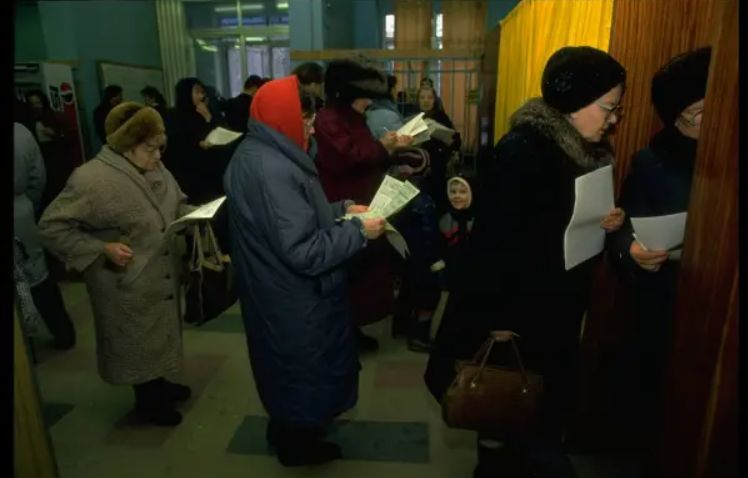
One of the secrets to
Putin’s popularity has been his ability to exploit the strange mixture of pride
and shame that many Russians carry inside them: pride for belonging to a unique
civilization and shame for its lingering backwardness. As he turned Russia into
a revanchist power, Putin compensated for the humiliation of corruption,
poverty, and lack of economic opportunity with an aggressive foreign policy. He
solidified his rule on the inferiority complex of an entire generation.
The Kremlin began to
call Russia’s increasingly dictatorial system a “sovereign democracy,” implying
it was not inferior to any other democracies and need not abide foreign
criticism. On paper, Russia has a bicameral parliament, a supreme court, and
many political parties, though only those candidates sanctioned by the Kremlin
are allowed to participate in elections.
The “sovereign
democracy” that Putin presented to the outside world was clouded by ideological
incoherence internally. The Communists became reactionaries, while the Liberal
Democrats advocated unvarnished Russian chauvinism. Politicians often labeled
“pro-Western liberals,” including Navalny, espousing nationalist, even
racist, views. The ruling United Russia party, whose only mission was to carry
out the Kremlin’s legislative tasks, soon took on the role that the Communist
Party of the Soviet Union had once played.
For many Russians,
the omnipresence of communist ideology during Soviet times and its glaring
disconnect from daily life rendered any ideology meaningless. In post-communist
Russia, ideological fervor, real or pretended, was replaced by cynicism and
resignation to the powers that be. Similarly, admiration for Western
democracies led to disillusionment after many Russians concluded that money and
dirty deals were as much a part of politics in the West as they were in Russia.
Political nihilism—the belief in nothing—has worked for Putin as a way to fill
a vacuum and extend his rule. But that nihilism also reveals his regime's
weakness since few Russians will take to the streets to defend Putin if his
grip on power is threatened.
Of course, the
Kremlin’s appeals to rodina, or
“homeland,” transcend politics. To the millions of Russians born in the Soviet
Union, the word has an ambiguous meaning since the borders of their original
homeland shrank considerably in 1991. Not surprisingly, Putin’s annexation of
Crimea, a jewel in the crown of Russia’s lost empire, was widely popular among
Russians. In a world without ideology, imperial nostalgia still has a powerful
draw.
Yet even
self-proclaimed Russian nationalists are confused about whether they want to
create a modern nation-state, which Russia never was, or resurrect the Russian
Empire. I once interviewed a nationalist leader named Vladimir Tor, who
promoted a “Russia for Russians” and its separation from the majority-Muslim
provinces in Russia’s North Caucasus region, such as Chechnya. When I asked him
if Buddhist Buryats or Muslim Tatars had a place in his Russia, Tor seemed
surprised by the question, then cheerfully amended his slogan to: “Russia for
Russians and those who agree with that.”
In Russia’s
ideological fog, only one label has real staying power: fascist. In the Russian
context, the word conjures the armies that Nazi leader Adolf Hitler sent to
invade the Soviet Union and has taken on the meaning of a monstrous enemy
hellbent on annihilation. That’s why many Russians barely noticed as Putin’s
Russia became more and more fascistic because Russians, by definition, could
not be fascists—only their worst adversaries could.
The Kremlin’s
branding of Ukrainians as fascists sounds absurd to Westerners because it so
blatantly contradicts reality: The Ukrainian far-right consistently performs
much worse electorally than nationalists in established European democracies;
Ukrainian President Volodymyr Zelensky is a Jew whose family suffered in—and
resisted—the Nazi invasion of Soviet Ukraine; and, perhaps most significantly,
Ukraine holds regular, competitive elections with often unpredictable outcomes.
But Putin’s use of the word “neo-Nazi” for Ukrainians is intended for a
domestic audience that understands its Soviet context. According to Putin,
Ukrainians are one people with Russians, except for the “traitors” who are
turning Ukraine into an “anti-Russia.”
Ukraine is losing any
resemblance to Russia. When the Soviet Union dissolved in 1991, Russia and
Ukraine remained closely bound through family ties, friendships, supply chains,
and pipelines. But even as older Ukrainians could look back on a common Soviet
past with Russia, a new generation began to see Ukraine’s future as a European
democracy. The country’s strong regional centers and competing oligarchs
prevented the rise of an omnipotent ruler as in Russia. In comparison to
Russians, Ukrainians were poor but free. The Kremlin had no problem with
Ukraine being a nominally independent country as long as its government could
be bought with cheap energy. But when a Kremlin-backed president fled anti-government
protests in Kyiv, the Ukrainian capital, in 2014, Putin started seizing
territory to stop Ukraine from slipping out of his control. The violence he
unleashed on the country made Ukrainians turn against Russia and view NATO as a
potential protector.
Ukraine’s success as
a democracy is a danger to Putin’s regime because of the example it sets for
Russians. Independent Ukraine started in a very similar place to Russia and has
struggled with many of the same challenges: widespread corruption, an archaic judicial
system, and overbearing security services. What has distinguished Ukraine from
Russia is the development of a strong civil society forged during two
pro-democracy street revolutions. In their belated process of de-Sovietization,
Ukrainians became citizens of their own country, while in Russia, Russians
remained subjects of their ruler.
Russian President Vladimir Putin attends a concert
marking the eighth anniversary of Russia's annexation of Crimea
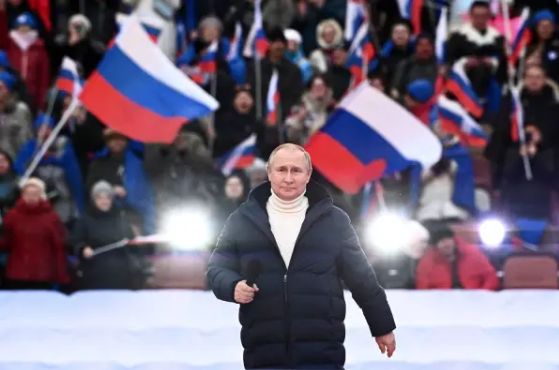
Ukrainian
independence and Ukraine’s democracy are tantamount to a rebellion against the
empire that Putin believes he must resurrect and lead. Putin’s rule, as eternal
as it may seem, will also come to an end. But there are scant grounds to
believe that his successor will be more conciliatory or democratically inclined.
Even if a new Kremlin leadership agrees to end the fighting, grievances among
Russian hard-liners may arise: that Putin was not violent enough or that the
West prevented Russia from winning. It is hard to imagine a future Russian
government voluntarily returning to Ukrainian territory that Putin annexed.
The fundamental
problem is that there is little prospect that Russians will come to terms with
their country’s misdeeds in the same way Germans did after World War II. Even
in democratic West Germany, it took four decades for the public to accept Nazi
Germany’s capitulation as a liberation rather than a defeat. But an honest
reckoning with the past was crucial for postwar Germans to overcome their
imperialist legacy, reconcile with former enemies, and build a thriving
democracy.
For Russians of the
future, the burden of the past will weigh doubly. If they are to find any
closure, they will have to account not only for Putin’s crimes in Ukraine but
also for more distant atrocities committed by his Soviet predecessors. During
perestroika, Russians began to uncover the true scope of Stalin’s
crimes. But in recent years, the Russian authorities hindered that painful work
before making it impossible. What matters to Putin about Stalin is his “great
victory” in World War II and the transformation of the Soviet Union into a
superpower that rivaled the United States. For Putin, the last Russian empire
has nothing to apologize for—and its ignominious collapse is a defeat worth
vindicating.
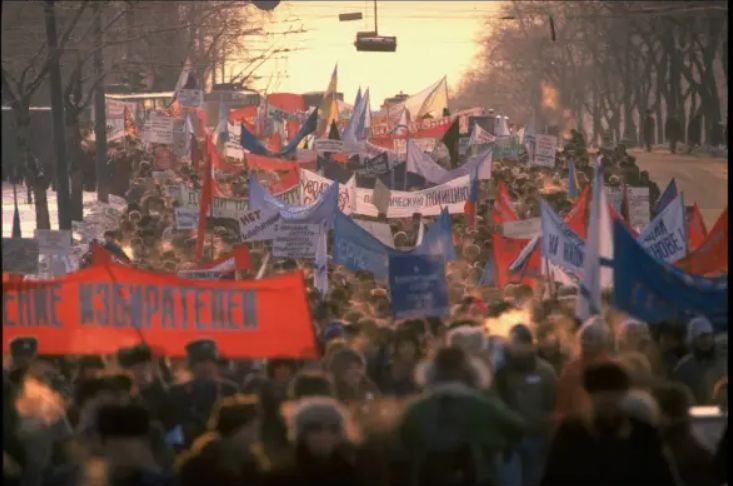
If Russia is ever to
become a democracy, it will depend on Russians unblinkingly examining their
recent history and abandoning their imperial delusions. Only a Russia that owns
up to the crimes committed in the name of empire can hope to begin to reconcile
with its neighbors and earn their trust. Imperial thinking implies domination
over others, competition with neighbors, and rule by an emperor. Democratic
thinking means minority rights, international cooperation, and rule by the
people. But as long as Russians do not see themselves as citizens of their own
country—and instead as subjects of their ruler—Russia’s democratization cannot
occur.
The challenges facing
a post-Putin Russia appear even more daunting than those the country faced
after the collapse of communism. It is difficult to see what could move
Russians to kill the empire in their heads and take the first steps to
transform their country from a broken empire into a multiethnic democracy.
Russia had two
chances at democracy in the 20th century: first in 1917, in the months before
the Bolshevik Revolution began, and again in 1991, when the Soviet Union
collapsed. Only Russians can decide if their next chance at democracy will be
more successful.
For updates click hompage here